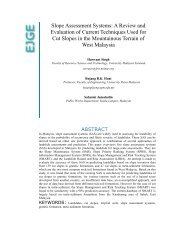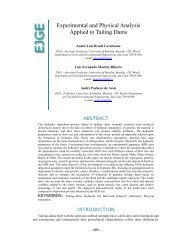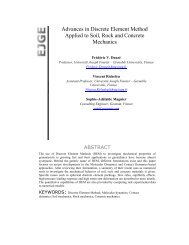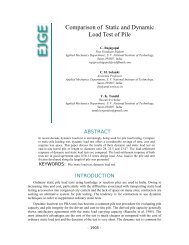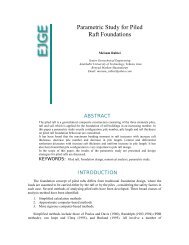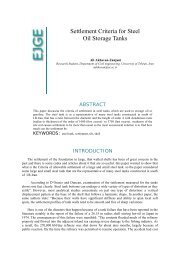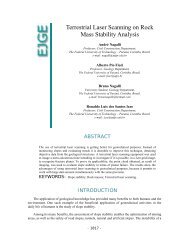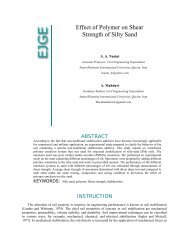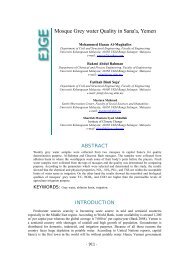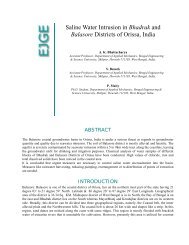Compressibility Characteristics of Fibrous Tropical Peat ... - Ejge.com
Compressibility Characteristics of Fibrous Tropical Peat ... - Ejge.com
Compressibility Characteristics of Fibrous Tropical Peat ... - Ejge.com
You also want an ePaper? Increase the reach of your titles
YUMPU automatically turns print PDFs into web optimized ePapers that Google loves.
Vol. 14, Bund. C 7<br />
RESULTS AND DISCUSSION<br />
Physical characteristics <strong>of</strong> Untreated (Natural) <strong>Peat</strong><br />
This study performed the basic tests on natural fibrous tropical peat soil. Table 2, with some<br />
characteristics and indications <strong>of</strong> the concentration at which all <strong>of</strong> the studied organic <strong>com</strong>pound<br />
are usually found in soils. It obtained a range <strong>of</strong> values almost in line with such other researchers<br />
as Ajlouni (2000), Huat (2004), Duraisamy et al. (2007-a) and (2007-b), Alwi (2007), Kazemian<br />
et al. (2009), Kalantari and Huat (2009).<br />
Table 2: Physical characteristics <strong>of</strong> the tested soil (untreated peat)<br />
Coefficient <strong>of</strong> consolidation (C v )<br />
There is a significance decrease in the coefficient <strong>of</strong> consolidation <strong>of</strong> the undisturbed samples<br />
with an increase in effective stress above the apparent pre-consolidation pressure (σ c ) (Huat,<br />
2004). Farrell et al. (1994) reported this decrease is more marked in the samples, which had the<br />
higher organic contents. The coefficient <strong>of</strong> consolidation for a particular pressure from<br />
consolidation test can be determined by curve fitting methods by using two methods:<br />
1. The logarithmic time (Cassagrande’s) method; and<br />
2. The square root time (Taylor’s) method.<br />
For fibrous peat, the results indicate that the coefficient <strong>of</strong> consolidation (C v ) decreased by<br />
increasing the load (consolidation pressure) and cement ratio simultaneously. The coefficient <strong>of</strong><br />
consolidation was decreased around 40%, by increasing consolidation pressure and cement ratio<br />
to 300kPa and 50%, respectively (Figure 6).



